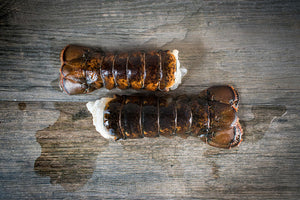Tips #1: Selecting Quality Salmon
When purchasing salmon, it’s important to be aware of what you’re buying. You want to be certain that the fish isn’t showing any signs of age such as a strong fishy odor or a mushy texture. Your salmon fillet should be firm to the touch, moist, and smell like the sea. Ask your seafood purveyor for help in making your choices, that’s what they’re there for! They can help give you all of the details on freshness, sources, and sustainability. Another important factor to consider when shopping for salmon is skin on or skin off? The answer depends on which type of cooking method you’ll be employing, so read on!
Tips #2: Choosing a Cooking Method
Salmon is one of the most versatile fish in town, meaning the cooking method options are nearly endless! Cooking methods for salmon include (but are by no means limited to) pan-searing, broiling, grilling, baking, and poaching. The only method that will produce a deliciously crisp skin is pan searing, so for all other methods, it’s best to opt for a skinless fillet. Only have salmon with skin on it but not feeling like pan-searing? Don’t worry, the skin will easily separate from the flesh once it’s cooked and can be peeled away before serving. One detail to keep in mind, regardless of cooking method, is that applying heat too hot and too fast will result in that unsightly white stuff on cooked salmon we have all probably experienced at some point. Luckily, it can easily be prevented thanks to the next tip!
Tips #3: Avoiding Albumin
The scientific name for the aforementioned white substance is albumin, and it turns out simply to be a protein that is expelled from salmon as it cooks. Albumin appears more readily in the presence of high and sudden heat, therefore it’s important to slowly and evenly cook salmon. This also relates to why skin-on salmon is ideal for pan-searing, as the skin acts as a buffer between the heat of the skillet and the flesh of the fish and helps to distribute the high heat (necessary for a crispy skin!) throughout the fillet without triggering albumin. You can avoid albumin by letting your salmon sit at room temperature for 20-30 minutes before cooking, so as to avoid the albumin-producing shock of cold fish coming into contact with high heat.
Tips #4: Achieving Perfect Doneness
So, things are going swimmingly! You’ve got your quality piece of salmon cooking away, albumin is nowhere to be seen, yet the question remains: when is it done? The USDA recommends cooking salmon to an internal temperature of 145℉, but here’s the thing. If you wait until your thermometer reads 145℉ before you pull it off the heat, your fish will be way overcooked in the end. The trick is to remove the fish from the heat about 10 degrees before your target and rest it for 5-10 minutes before serving. This allows the temperature to come up the rest of the way. If you’re not a thermometer person, all good! You can check for doneness by gently pulling apart the fish at the thickest point of the fillet. When the center is just barely translucent, it’s time to get off the heat and get to resting! And then, on to eating of course.






